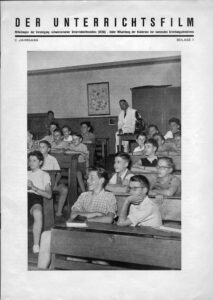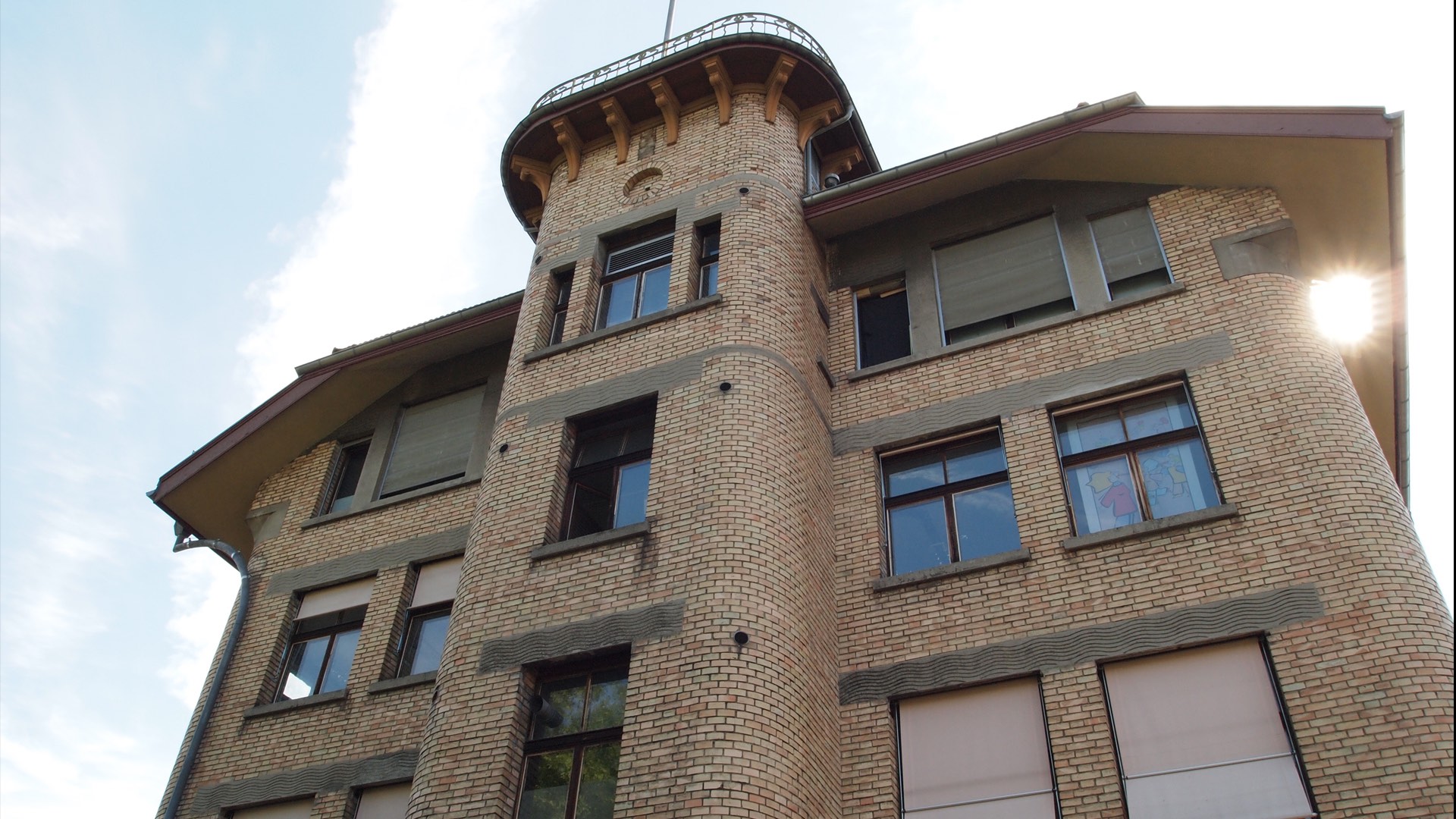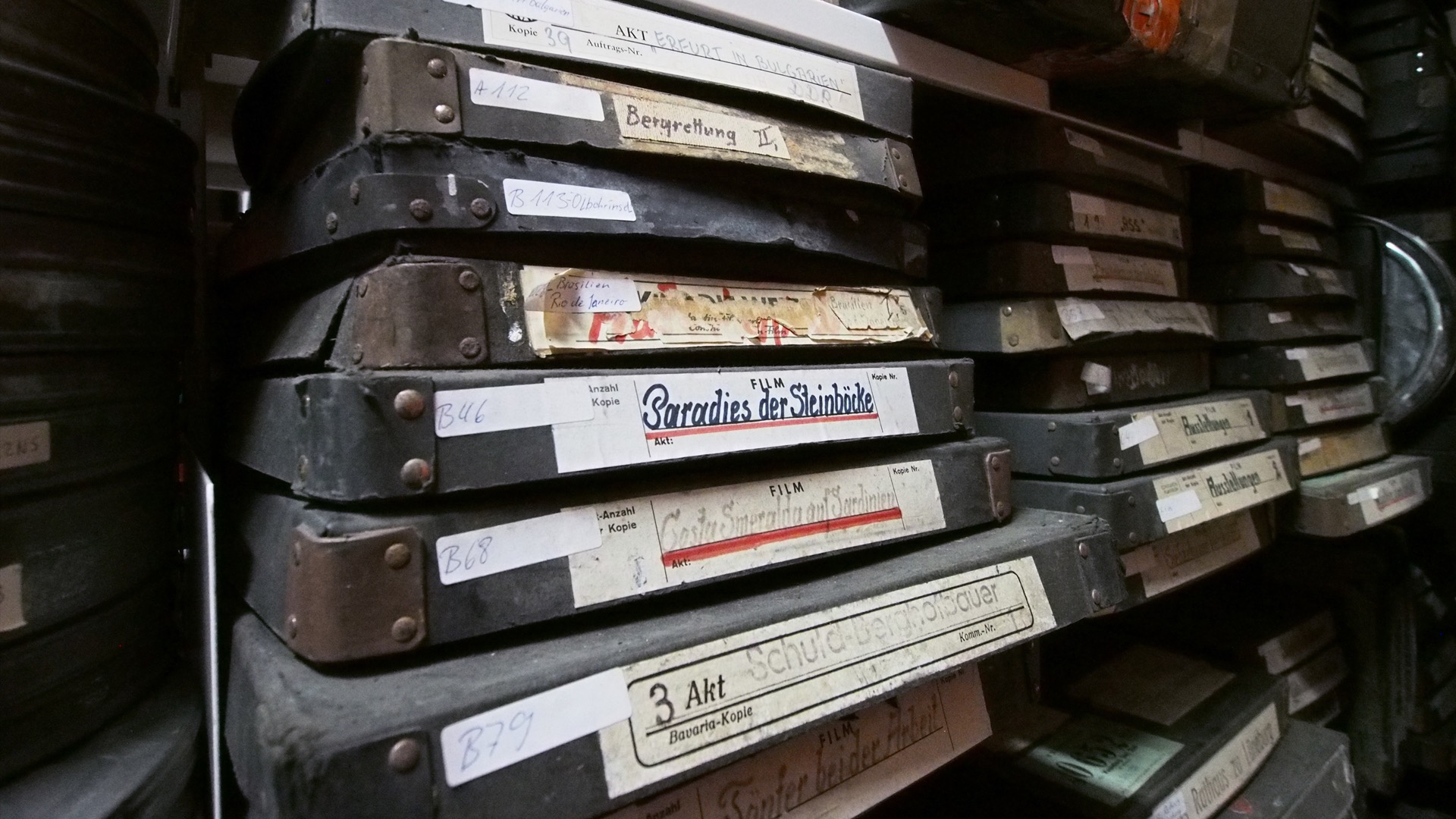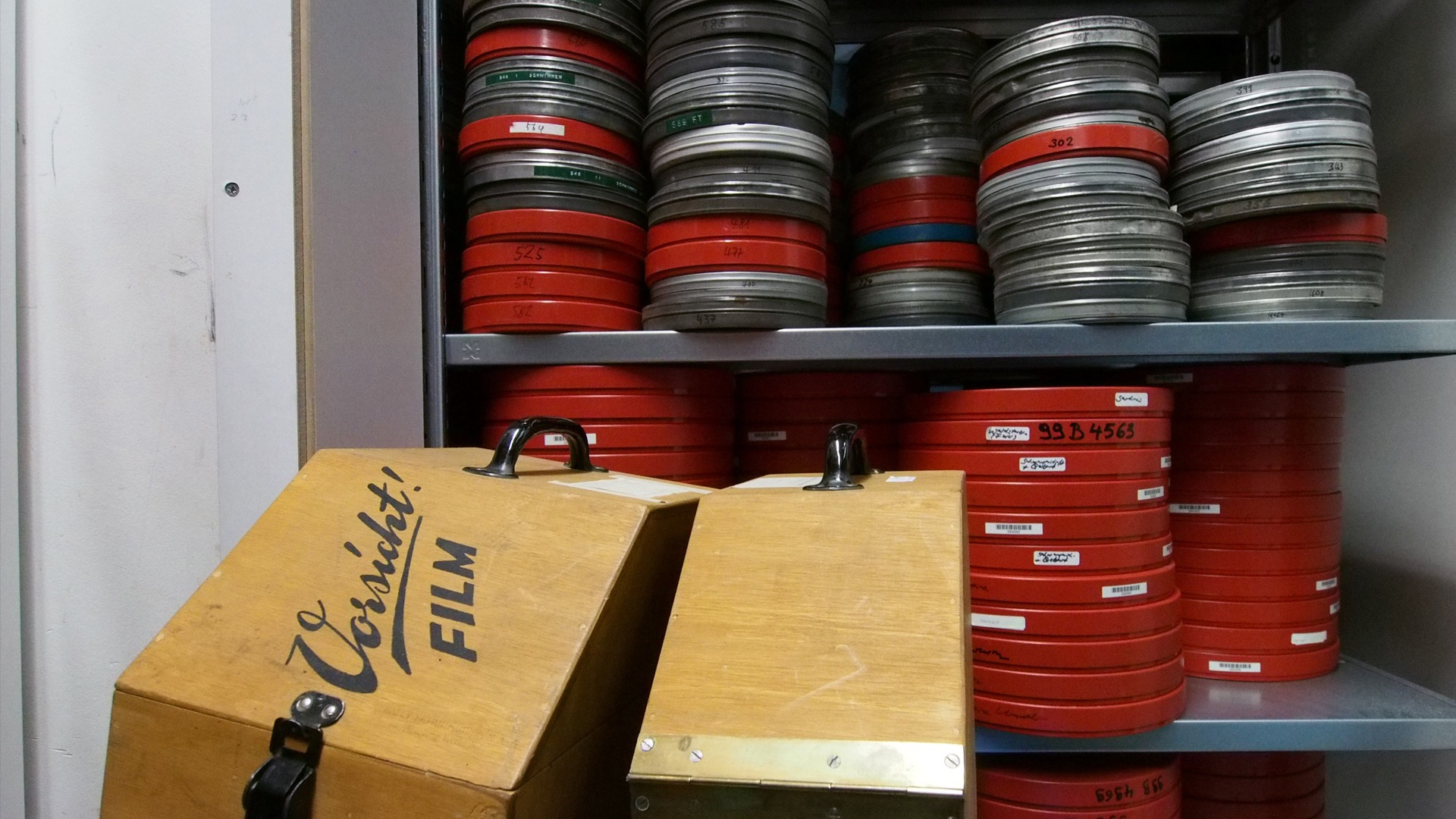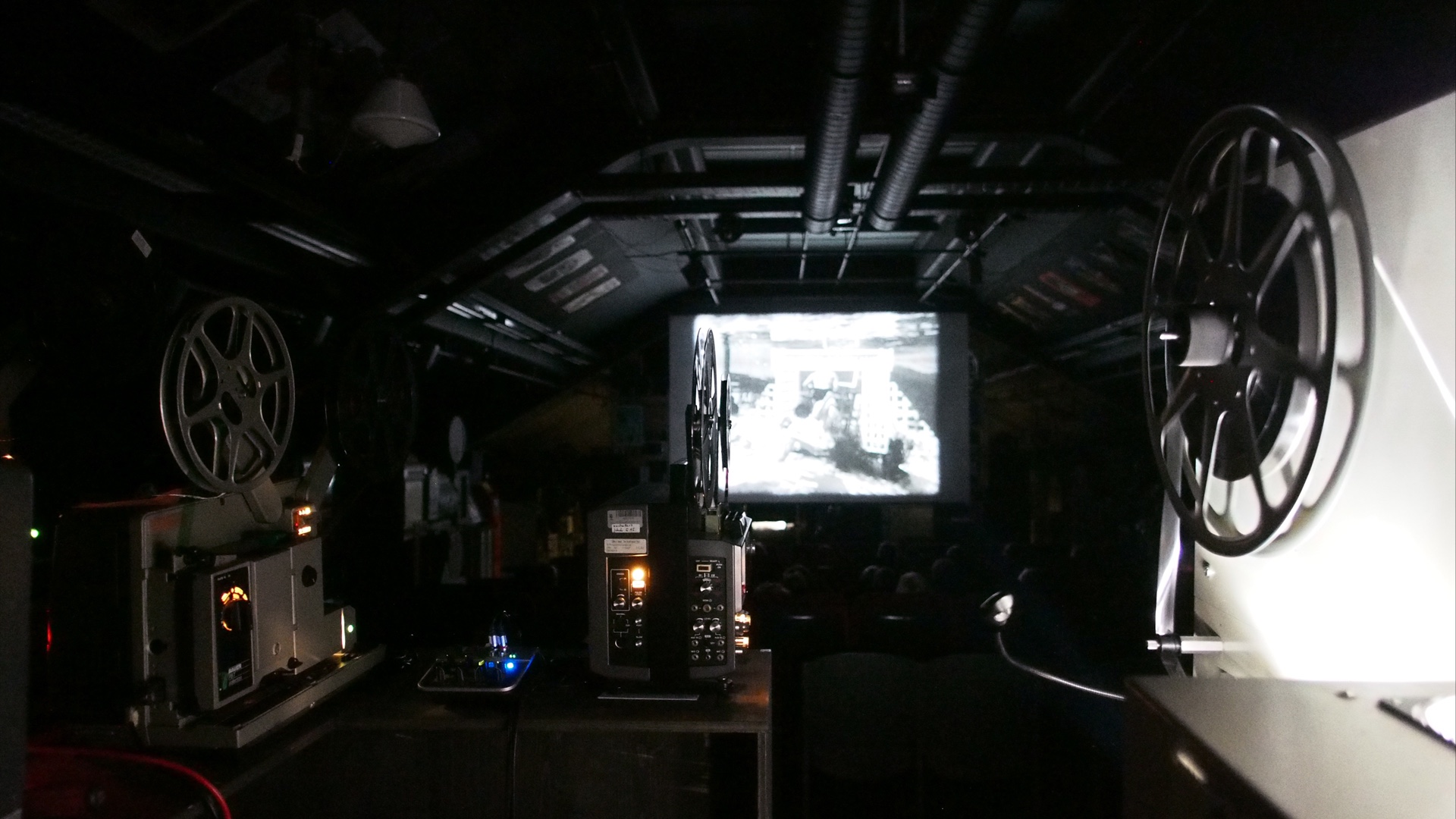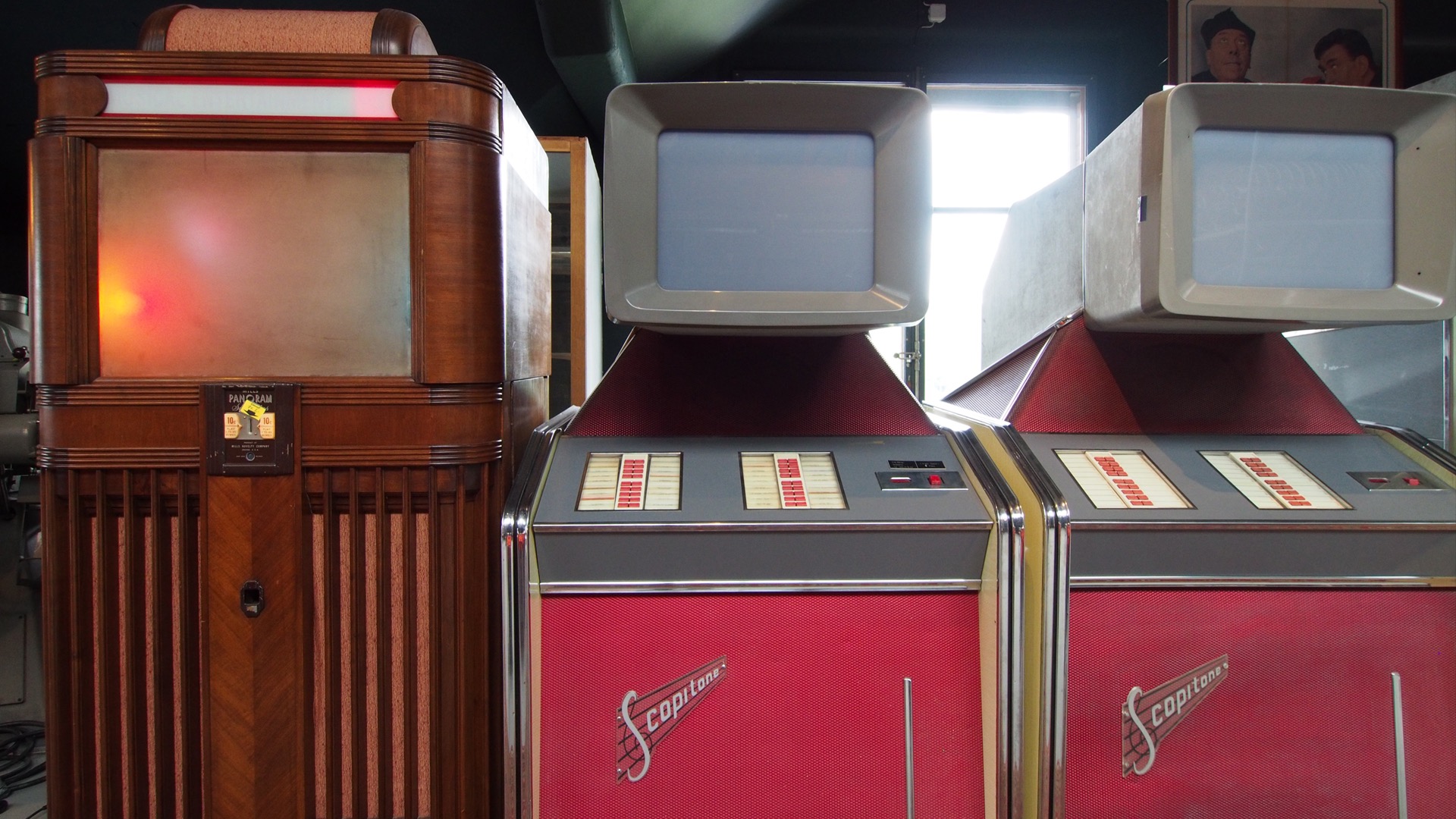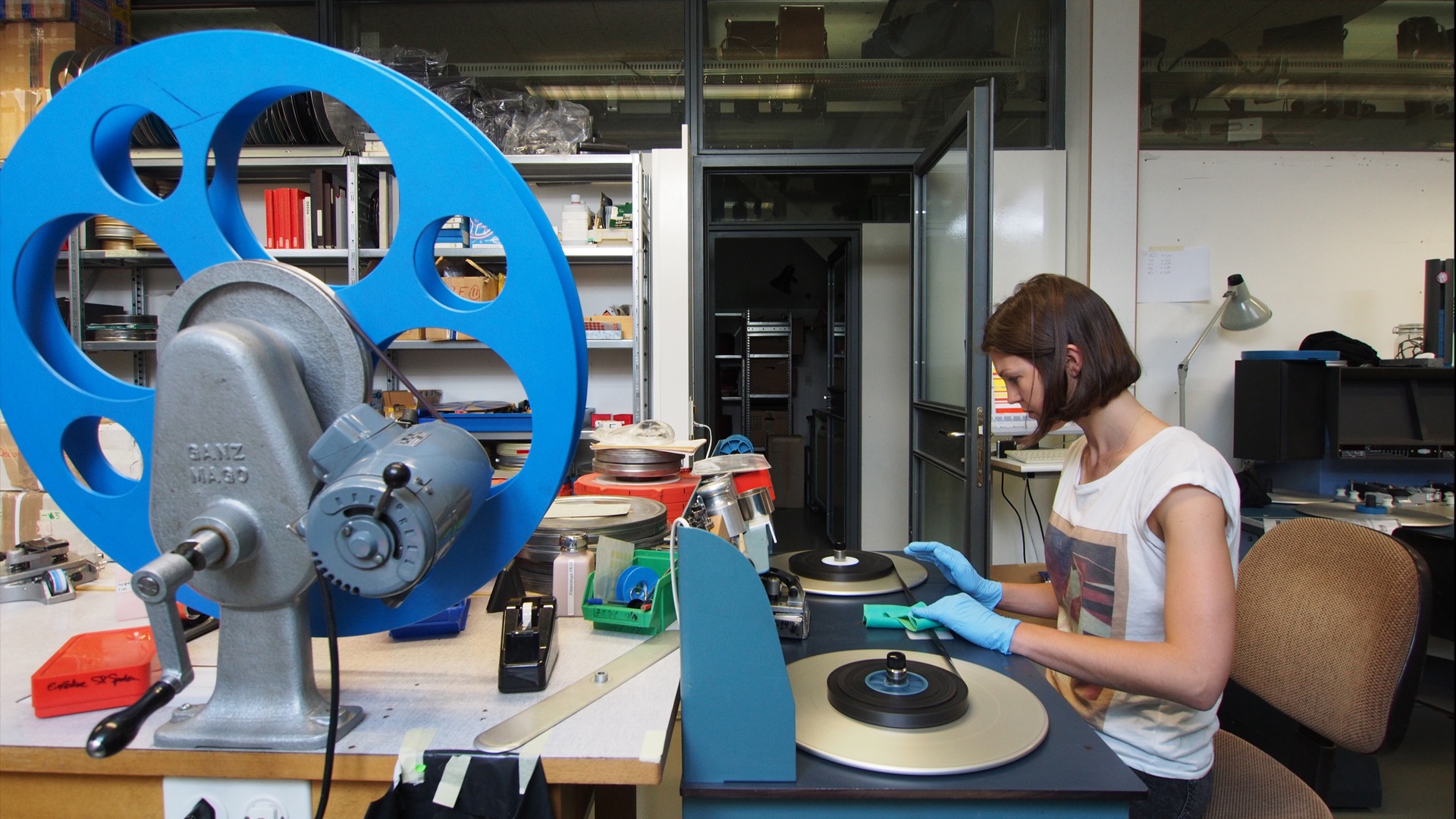CINEMA (HI)STORIES
The Lichtspiel collection includes many films, devices and documents, including their (hi)stories.
Some informations are still being researched, some just have to be written down, others are discovered by chance. We would like to present these (hi)stories and research reports results here. Some of them are related to objects of our collection, however, this is not mandatory. Sometimes we just find them too good not to be published.
We would like to thank all the participants and rights owners who made available the texts and illustrations. Wherever possible we have clarified the rights. If you do find any further information, please do contact us.
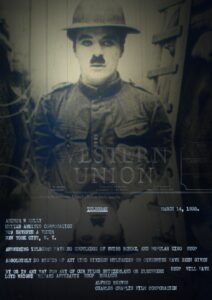
Charlie Chaplin, the War and the Swiss School and Popular Cinema SSVK
Inspired by a well preserved film print of the 1918 Chaplin classic SHOULDER ARMS from the collection of the Swiss School and Popular Cinema (SSVK) in the archives of Lichtspiel Cinemathèque Berne, film historian Adrian Gerber explores in his essay certain delicate incidents in the history of the SSVK. His research also takes him back to the early days of cinematography, first decades of the 20th century and the practices of production, distribution, propaganda and censorship of these years.
Adrian Gerber, January 2021
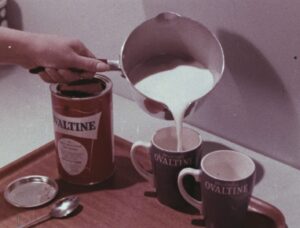
OVALTINE ADVERTISEMENT - A WELL KEPT TREASURE
"Ovaltine is dynamic! - This famous slogan describes the energy potential of the Bernese malt drink, created by Dr Georg Wander (1841-1897) and commercialised by Wander AG since 1904.
Historian Timothée Olivier analysed the hundreds of Ovaltine films from the Neuenegg company, a collection that has been preserved, restored, digitised and presented to the public by Lichtspiel.
Timothé Olivier, 2021
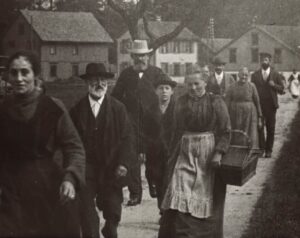
FLAWIL
In the course of the recovery of the last remains of the Habis Textil AG factory and Villa Waldhof properties of the Habisreutinger-Ottiker family, four films were discovered and entrusted to the Ortsmuseum Flawil. Since then, the four nitrate films have been digitised and are on deposit in the archives of the Lichtspiel Cinémathèque. They show first signs of decay, it was high time take conservation measures. But who made these films, and when, and what do the four film reels show? (in German)
Urs Schärli, 2021
